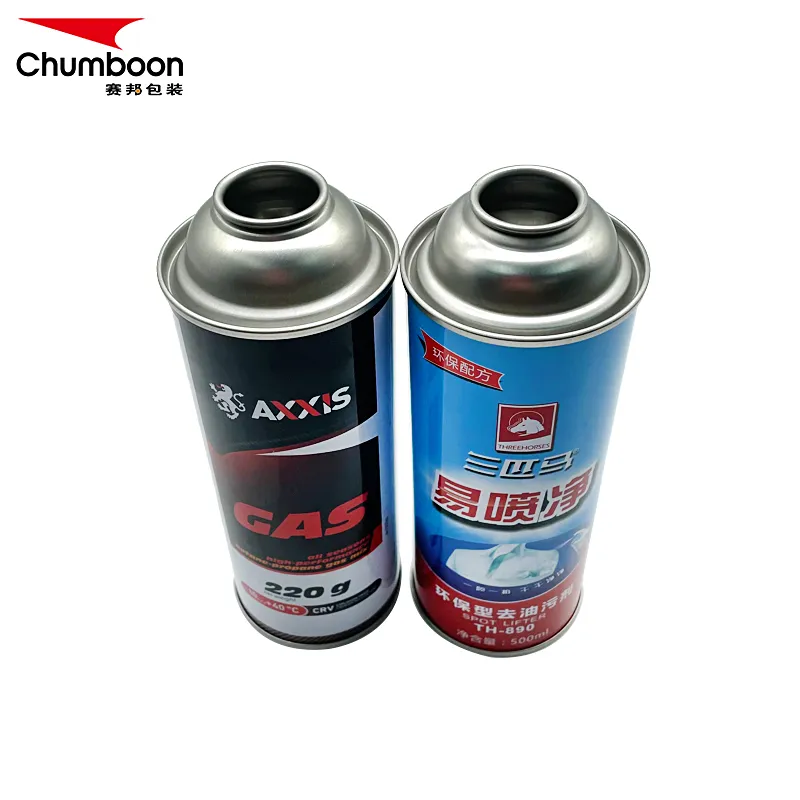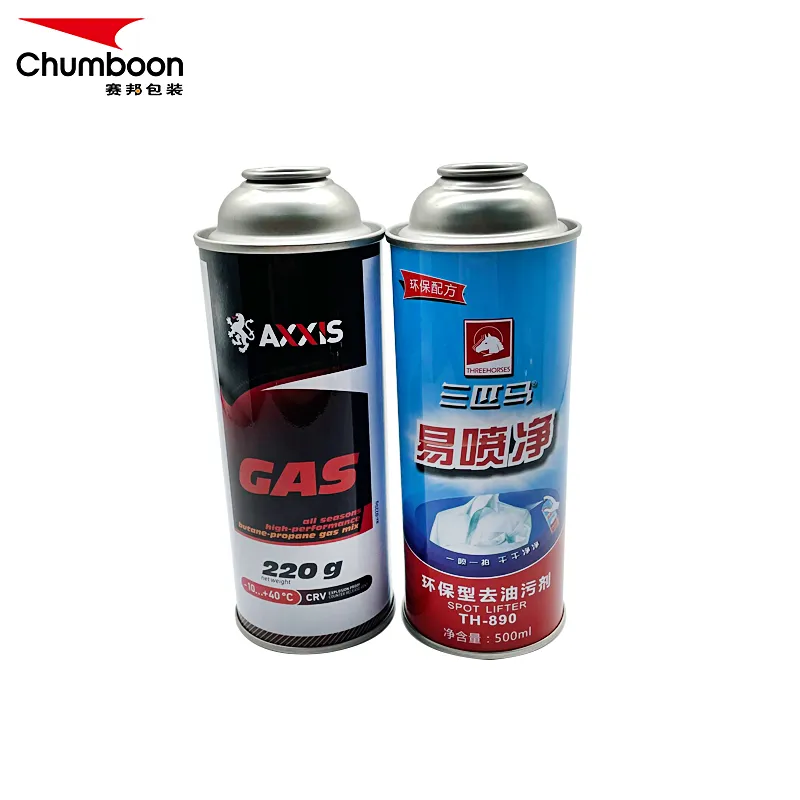In our daily lives, tin aerosol cans are widely used in personal care, household cleaning, food processing and industrial fields. You may have noticed that various warning signs are printed on almost every tin aerosol can. These signs are not decorations, but important safety reminders.
So why are there these warning signs on aerosol tin cans? This article will explore the necessity and importance of warning signs on aerosol tin cans from multiple perspectives, including the composition of aerosol tin cans, potential risks during use, legal and regulatory requirements, and consumer protection.

1. Composition and potential risks of aerosol tin cans:
Basic composition of aerosol tin cans:
● Can: tin aerosol cans are generally made of metal or plastic, with liquid or paste inside. The can needs to have a certain strength to withstand the internal pressure.
● Propellant: In order to spray the contents, tin aerosol cans are usually filled with propellants such as butane, propane, compressed air, etc. Most of these propellants are flammable gases, which pose certain safety hazards.
● Valves and nozzles: Aerosol tin cans are equipped with valves and nozzles on the top to control the spraying of the contents. These components need to be precisely designed to ensure safe and effective use.
Potential risks:
● Explosion risk: Aerosol tin cans are under high pressure inside and may explode when exposed to high temperatures or impact. In particular, aerosol tin cans containing flammable gases are more likely to explode in high temperature environments.
● Fire risk: The propellants of many aerosol tin cans are flammable substances, such as butane and propane. If aerosol tin cans are close to a fire source or encounter sparks when spraying, they may cause a fire.
● Health risks: Some chemical components in tin aerosol cans may be harmful to the human body, such as causing breathing problems after inhalation, or allergic reactions after skin contact.

2. Legal and regulatory requirements:
International standards:
● GHS (Globally Harmonized System of Classification and Labelling of Chemicals): GHS stipulates the classification and labeling standards for chemicals and requires that hazardous chemicals be clearly labeled. Propellants and other chemical ingredients in tin aerosol cans need to be labeled with warnings according to this standard.
● ISO standards: The International Organization for Standardization (ISO) has developed safety standards for aerosol tin cans, including material selection, manufacturing processes, and labeling requirements, to ensure product safety worldwide.
National regulations:
● EU: The EU's REACH and CLP regulations require that all chemicals and their mixtures be evaluated and classified before they are sold on the market, ensuring that clear warning information is on the product label.
● USA: The U.S. Environmental Protection Agency (EPA) and the Consumer Product Safety Commission (CPSC) require that products such as tin aerosol cans must be labeled with warning signs to alert consumers to the risks of use.
● China: According to the "Regulations on the Safety Management of Hazardous Chemicals of the People's Republic of China", tin aerosol cans manufacturers must indicate safety warnings on product labels to ensure that consumers understand the risks of use.
3. Specific content of warning signs:
Hazard signs:
● Explosion sign: reminds consumers that aerosol tin cans contain high-pressure gas, which may explode when exposed to high temperatures or impact. This sign is usually a yellow triangle with an explosion pattern inside.
● Flammable sign: indicates that tin aerosol cans contain flammable substances and should be kept away from fire. This sign is usually a red flame pattern, reminding consumers to prevent fire accidents.
Precautions for use:
● Keep away from fire: aerosol tin cans should be kept away from open flames, heat sources and electric sparks to prevent explosion or fire. The warning sign clearly indicates that they should be used in a safe environment.
● Do not expose to high temperature: tin aerosol cans should not be exposed to high temperature environments, such as in a car with direct sunlight or near a heat source, to prevent the gas in the can from expanding and causing an explosion.
● Do not puncture the can: After use, aerosol tin cans should not be punctured or thrown into the fire to prevent residual gas from exploding. Discarded aerosol tin cans should be handled in accordance with regulations to avoid safety hazards.
Health tips:
● Avoid inhalation: The chemical components in some tin aerosol cans may be harmful to the respiratory tract. When using, they should be used in a well-ventilated environment to avoid direct inhalation of the spray.
● Avoid contact with eyes and skin: Certain substances in aerosol tin cans may cause skin or eye irritation. Avoid direct contact when using them. If they come into contact accidentally, wash them immediately.

4. Consumer protection and responsibility:
Protect consumer rights:
● Right to know: Warning signs ensure that consumers are aware of the potential risks and precautions of the product and protect their right to know.
● Safe use guidance: Through clear warning signs and instructions for use, help consumers use tin aerosol cans correctly and safely to avoid unnecessary harm.
Responsibilities of manufacturers:
● Compliance production: Manufacturers must comply with relevant laws and regulations and standards to ensure that aerosol tin cans products are compliant and that warning signs are clear and accurate.
● Quality assurance: Companies should conduct strict quality control and safety testing to ensure the quality and safety of tin aerosol cans and reduce possible risks during use.

5. Importance of education and publicity:
Public education:
● Safety awareness: Through media, community activities and education programs, raise public awareness of the safe use of aerosol tin cans and enhance safety awareness.
● Correct disposal: educate the public on how to properly dispose of waste tin aerosol cans to reduce environmental pollution and safety hazards.
Corporate publicity:
● Usage instructions: Companies should provide detailed usage instructions and safety tips through channels such as product packaging, instructions and official websites.
● Risk notification: In product advertising and promotional activities, companies should truthfully inform consumers of product risks to avoid misleading consumers.
Conclusion
The warning signs on tin aerosol cans are not only a reminder of the potential risks of the product, but also an important measure to protect consumer safety. Through clear warning signs and instructions for use, consumers can better understand the risks of using aerosol tin cans and take necessary precautions to ensure safe use.

